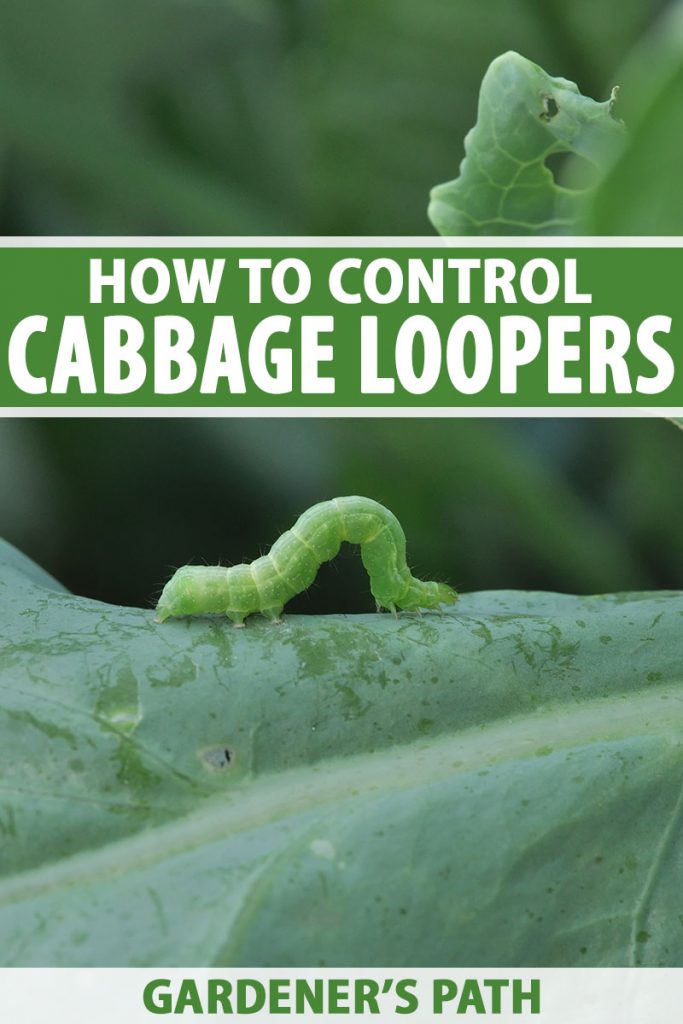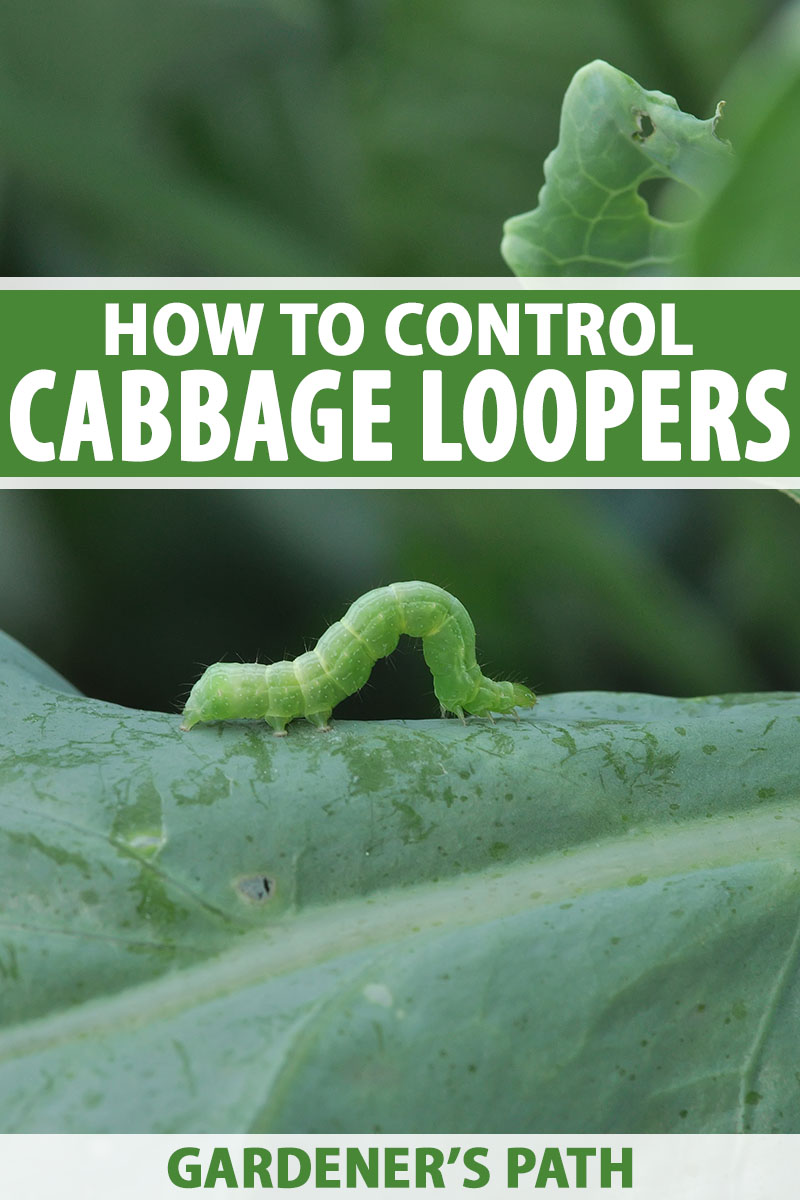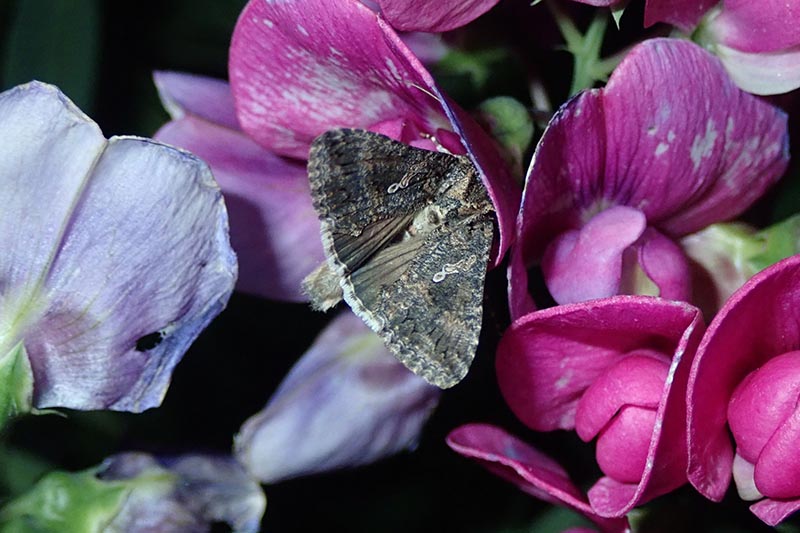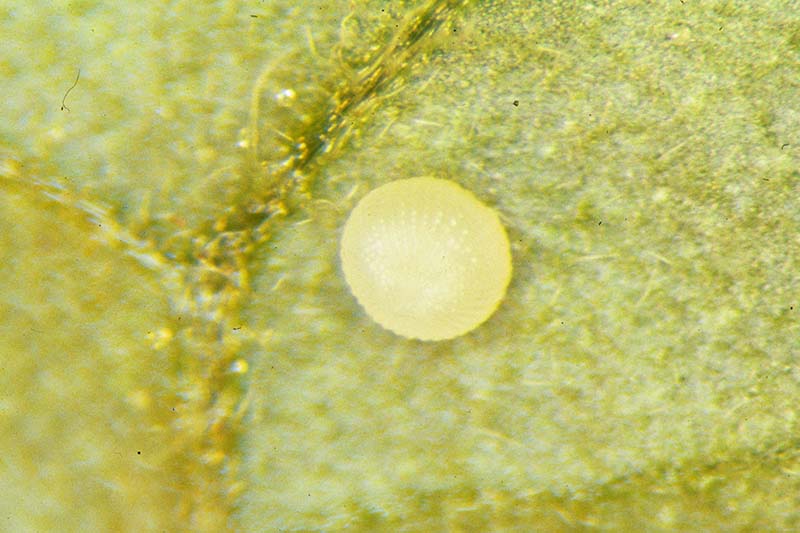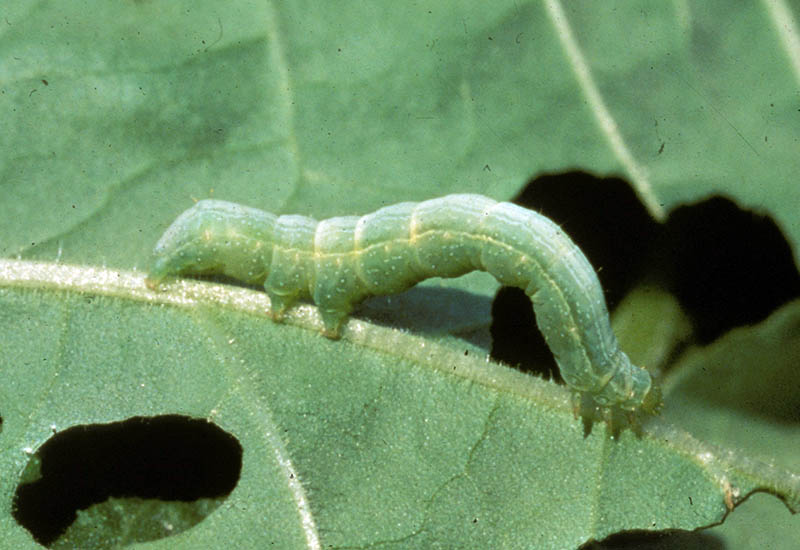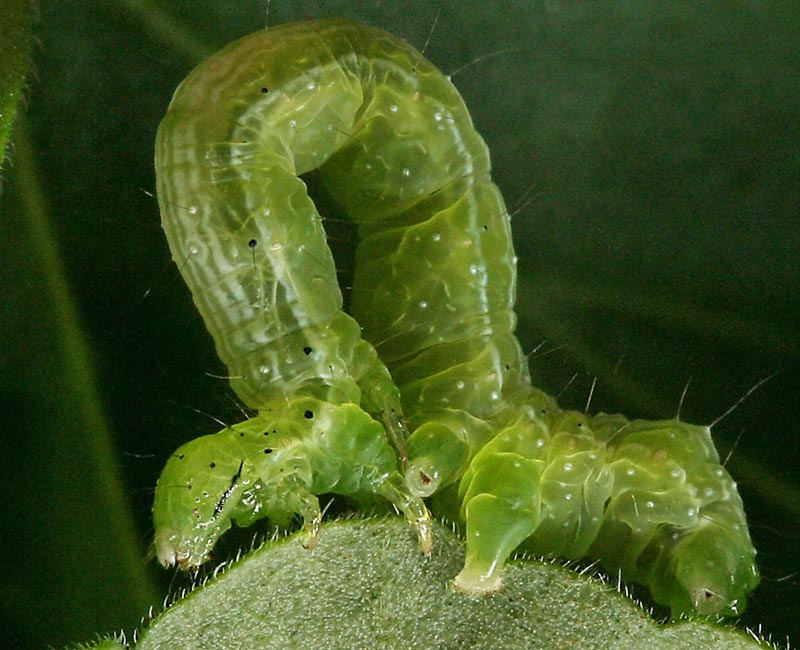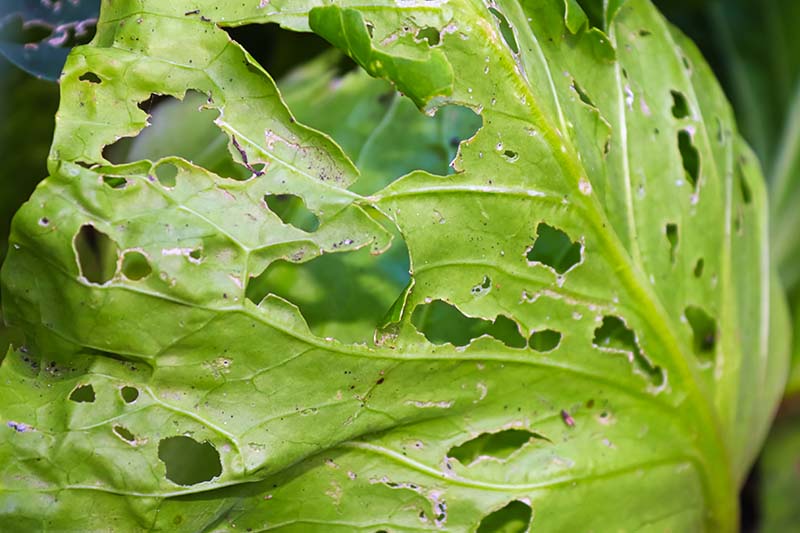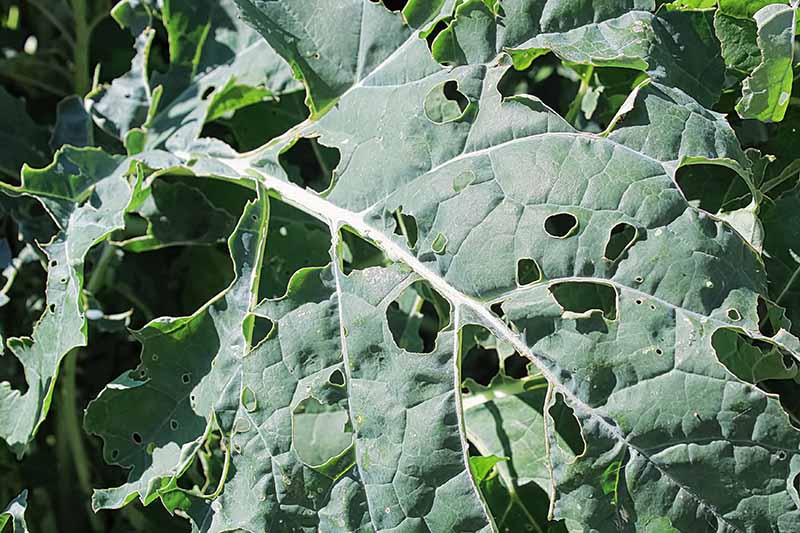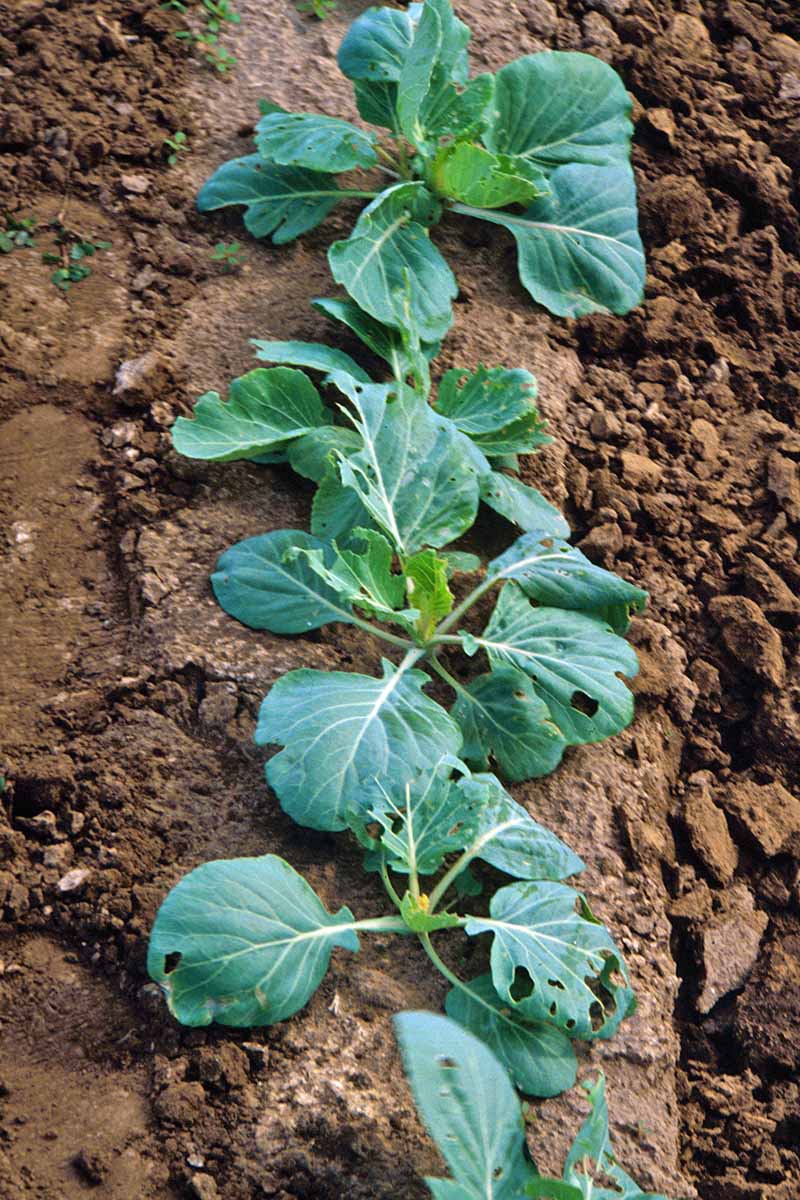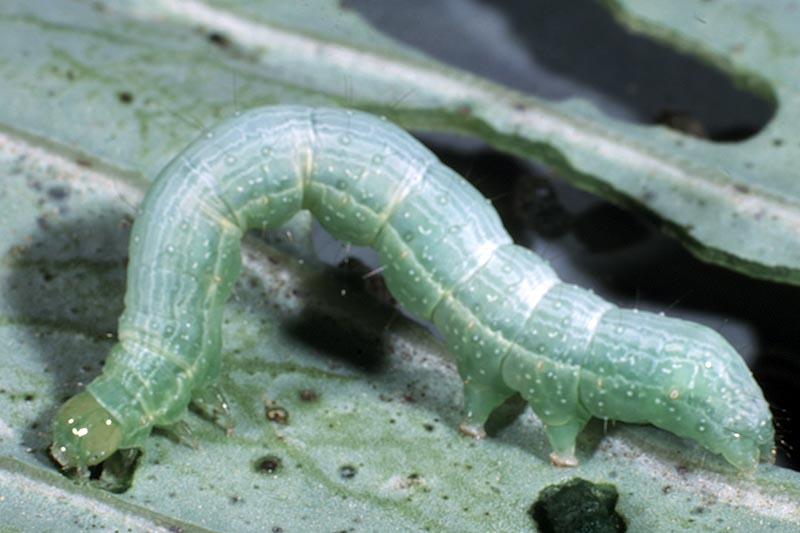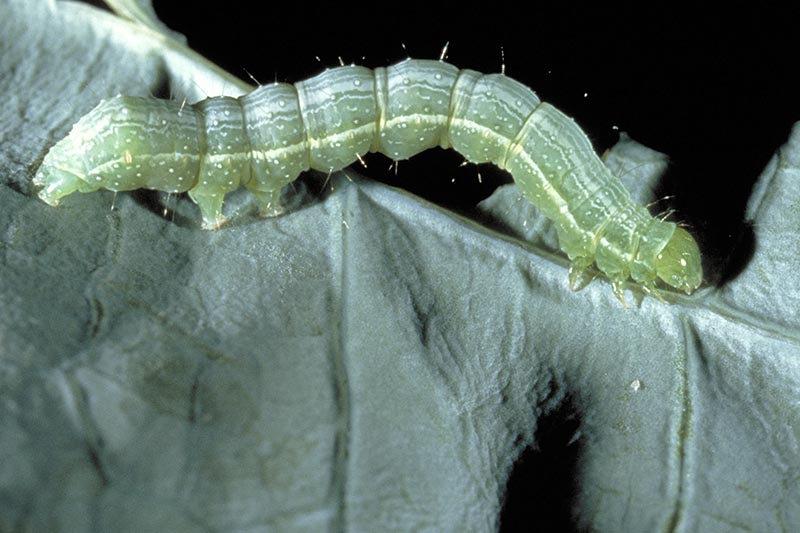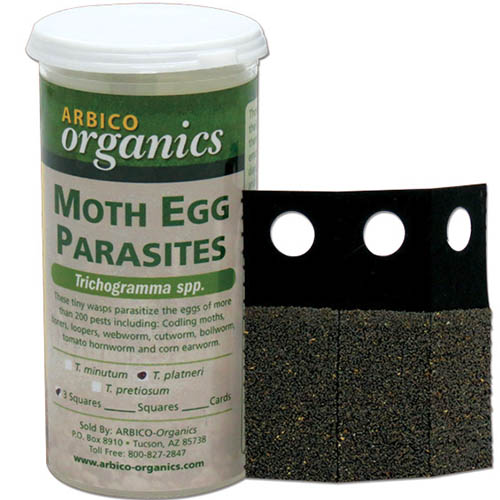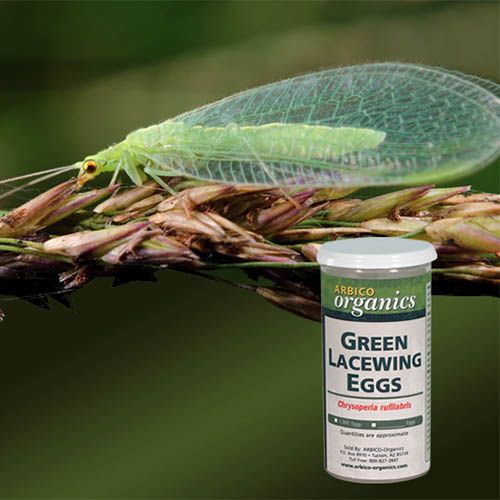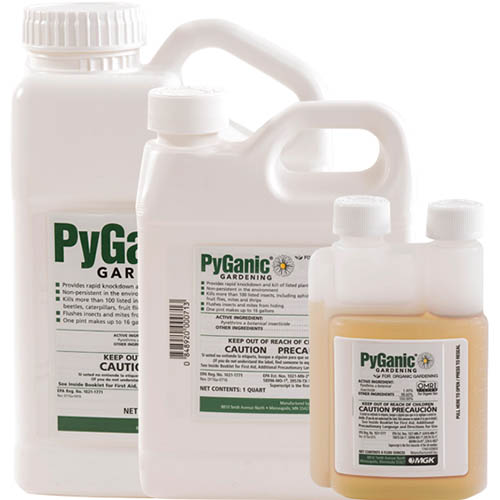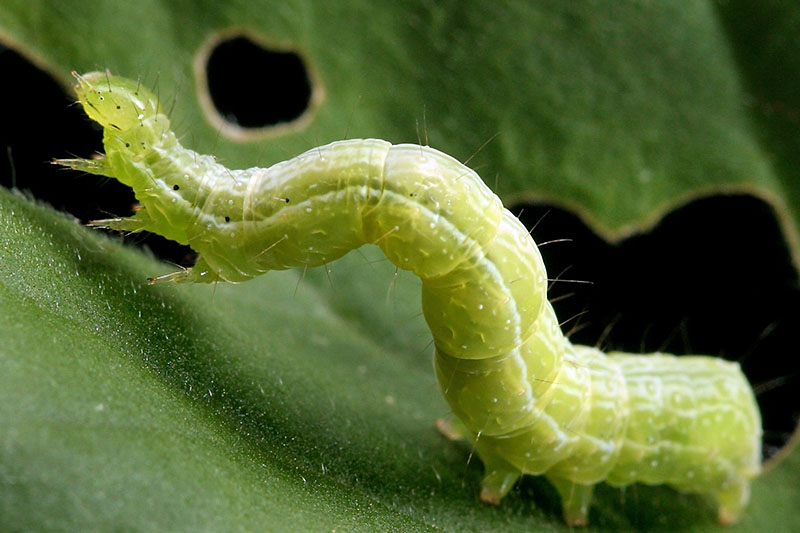These green inchworms feed on a variety of garden crops, from kale to tomatoes, but as their name suggests, are particularly partial to your cabbages and other cole crops. And like the Very Hungry Caterpillar, they can make an almighty mess. We link to vendors to help you find relevant products. If you buy from one of our links, we may earn a commission. When you have identified that it is in fact cabbage loopers and not some other type of pest that you’re dealing with, they’re pretty easy to control with a variety of methods. Let’s take a look in a bit more detail. Here’s what I’ll cover:
Identification, Biology, and Life Cycle
The cabbage looper is the larval stage of the Trichoplusia ni moth, a member of the Noctuidae family. The moth is grayish-brown in color, with a lighter-colored base and a single silver spot on the top of the wings. The body is approximately one inch long, with a wingspan of up to one and a half inches. In my opinion they look rather drab and boring, but things start to get interesting after they lay their eggs. The moths themselves don’t do any damage as they feed on nectar, and they are generally active overnight or at dawn and dusk. After they have done whatever the birds and bees (and moths) do, the female checks out your garden and identifies the most promising crops on which to lay her eggs. And that’s usually your brassicas. All members of the Brassicaceae family, such as kale, turnips, broccoli, and cauliflower will be firmly in her sights. The moths lay light green or yellow spherical eggs on the undersides of leaves. Sometimes they lay single eggs, and other times they lay small clusters. If you’ve got your ruler out, each egg measures 0.6 millimeters in diameter. These eggs hatch in two to seven days, depending on the temperature. The warmer the temperature, the quicker they are to hatch. When the larvae first emerge, they are white, and will probably go unnoticed unless you are very vigilant. As they chew their way through your leaves, they’ll turn green. As they mature, the larvae are clearly identifiable as a green inchworm – typically one to one and half inches long – with a distinct white stripe on each side of the body. They have six pairs of legs, three of these are near the head and the rest are situated towards the back of the abdomen, known as “prolegs.” What’s the best way to be sure you’re dealing with cabbage loopers and not some other kind of caterpillar? Check how they move. They arch their back into a distinctive loop and push the front part of the body forwards. Hence the name “looper.” But don’t spend too much time watching them move, because with every step (loop?) they’ll be taking another bite out of your crop. In the early stages, the larvae only feed on the undersides of leaves. You’ll notice portions of the leaf that appear to be thin, referred to as a “windowpane” appearance.
Older larvae eat all the way through leaves, causing seemingly random, irregular holes. If you have a large infestation, they can completely defoliate your plant, or at the very least, stunt its growth. You’ll typically see them on the leaves, but they can also burrow into the cabbage or broccoli heads.
These pests can consume three times their bodyweight per day, and will leave brown frass – sticky fecal matter – in their wake, contaminating your crop. After about 20 days of making merry with your vegetables, the larvae will pupate, forming a fragile cocoon on the underside of foliage or in plant debris. The pupa is generally about an inch long, and will start out green, gradually turning brown and then black. Adult moths will emerge after four to 14 days, depending on the temperature, and the process will start all over again.
Distribution
Cabbage loopers are found throughout the US, although they only overwinter in warmer climates. According to experts from the Entomology Department at the University of Florida, these pests can complete between two and seven life cycles each year. Warmer temperatures lead to the completion of more life cycles, which means you’ll be dealing with them for most of the growing season. In the south, this pest overwinters as an adult and some of these adults migrate north in the spring. John L. Capinera from the University of Florida Department of Entomology and Nematology notes that it has been estimated that adult cabbage looper moths have a flight range of up to 125 miles.
How to Manage Cabbage Loopers
These pests mainly feed on brassicas but will also attack other crops including radishes, tomatoes, potatoes, spinach, lettuce, and beans. If you’re tired of seeing ragged leaves and loopy inchworms on your crops, there are a number of methods you can use to eradicate them. An integrated pest management strategy (IPM) can help you manage pests sustainably. This can include the use of pheromone traps to monitor – and identify – adult populations and disrupt mating activity.
Cultural Controls
Cultural controls include the use of floating row covers early in the season to prevent the moths from laying eggs on your crops, encouraging birds and beneficial insects into your garden, and clearing out plant debris at the end of the season to prevent a repeat performance next year. Check your crops regularly, and remove the eggs. If you have bought transplants from the nursery, inspect them carefully before planting or you may inadvertently introduce this pest. Thoroughly inspect your plants’ leaves, top and bottom, and pick off the caterpillars by hand. You can feed them to your chickens as a special treat or drown them in a jar of soapy water and dispose of them in the trash. Food grade diatomaceous earth can be effective in the case of a small infestation. Sprinkle it around and on the leaves of your plants – top and bottom. This will need to be reapplied after rain, and will not affect the adult population.
Trichogramma spp. Parasitic Wasps You can release live parasitic wasps into your garden. The best time to do this is when you see the adult moths or eggs. Find parasitic wasps from Arbico Organics for release into your garden. Another useful predator that attacks the eggs is the green lacewing, Chrysoperla rufilabris.
Green Lacewing Eggs The lacewing larvae feed on the cabbage looper eggs and a variety of other insect pests, such as aphids, thrips, and whiteflies – bonus! Arbico Organics supplies lacewing eggs for placing on affected plants which will hatch three to 10 days later.
Biological Control
Biological control with Bacillus thuringiensis kurstaki (Btk) is effective. This is a soil bacterium that when ingested by the pest, will release a toxin that paralyzes the digestive system. It is not harmful to humans, birds, pets, fish, or most beneficial insects.
Bonide® Thuricide Btk affects the larval stage and is most effective when ingested shortly after hatching. It’s applied as a spray, and you’ll need to make sure you treat the entire plant, top and bottom of all leaves. You can find Bonide® Thuricide in a variety of size available at Arbico Organics. And check out our guide to learn more about B. thuringiensis and how it works.
Organic Insecticides
Organic broad-spectrum pesticides are available to control cabbage loopers, but you need to bear in mind that these can also kill beneficial insects, including honeybees and other pollinators. Pyrethrin-based insecticides are made from plant extracts of some species in the Chrysanthemum genus. The spray will kill both the larvae and the eggs on contact.
PyGanic Insecticide You can find PyGanic Gardening insecticide available at Arbico Organics. Spinosad is an insecticide that works by paralyzing the pest. It’s a natural substance made by fermenting soil bacteria and is effective against a variety of pests including spider mites, leafminers, and ants.
Monterey Garden Insect Spray Even though it’s listed as an organic insecticide by the Organic Materials Review Institute (OMRI), it is toxic to fish and bees. You can find Monterey Garden Insect Spray in a ready-to-use bottle or as concentrate available at Arbico Organics.
Chemical Pesticides
As a last resort, you may decide to use chemical insecticides to manage an infestation. Carbaryl, sold by Bayer as Sevin, is effective, but it will likely clear out any and all beneficial insects from your garden as well. Another option is cyfluthrin, the active ingredient in Baythroid and Solfac. If you do choose to use chemical treatments, always follow the manufacturer’s instructions. You can learn more about the safe application of chemicals in our guide.
Look Out for Loopers
If left unchecked, cabbage loopers can do significant damage to your crops, but once you’ve identified their presence they are relatively easy to control. Check your garden regularly for evidence of the adults, eggs, and the easy-to-identify inchworms. Picking them off by hand is effective but if you need some extra help, you can choose a control method that won’t harm beneficial insects and pollinators. Have you had problems with cabbage loopers in your garden? Share your tips in the comment section below. And for more information on pests that may damage your crops, you’ll need these guides next:
How to Eradicate Cabbage Worms on Cole Crops and Crucifers Getting a Grip on Flea Beetles How to Keep Slugs Off Cabbage and Other Cole Crops
© Ask the Experts, LLC. ALL RIGHTS RESERVED. See our TOS for more details. Significantly revised and expanded from an original draft by Briana Yablonski. Product photos via Arbico Organics. Uncredited photos: Shutterstock.
